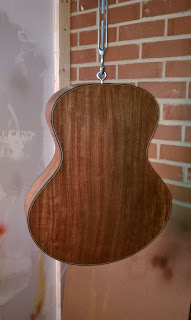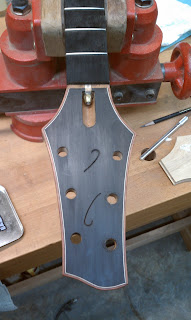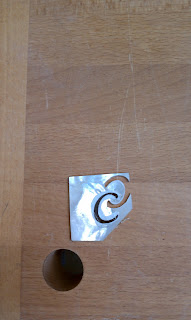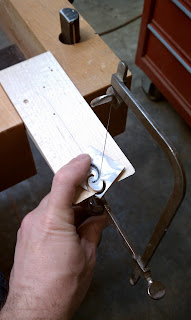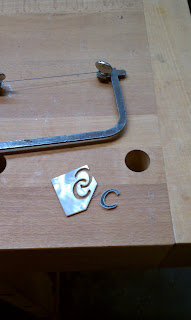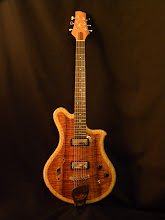One thing I've always been curious about, is Hide glue. It's a subject of much debate in the guitar nerd community. Some say there are tonal advantages to using it. Hide glue dries really hard and brittle, and the theory is that it transfers vibration through all of the glue joints better than the modern alternatives. I've used hide glue a bit for repairs, but never built a complete instrument using it. For those of you who don't know what hide glue is...it's a glue (shocking! I know) made from animal parts all boiled down to a goo... I just threw up in my mouth a little bit. By the time it gets to me, the glue is in a dry powdery form. I have to add water and heat to reconstitute it. Ethically I'm not sure I can get behind this glue, but I'm drawn to the tradition of it. Hide glue has been used as an adhesive for nearly 5000 years (if you believe Wikipedia!) Certainly some of the finest instruments around have been constructed with hide glue. In my world, the jury is still out, but I like the process of using it. I like that it takes skill and care to get a good glue joint. Skill and care seem to be disappearing from our world.
As I near the end of this build, my thoughts turned to the inevitable question of what finish to apply. The traditional finish for most Archtop guitars and most Flat-tops is Nitrocellulose laquer. I've sprayed my fair share of it over the years. These days I'm using a water based spray-on finish which I really like. It's less toxic than Nitro, it dries really hard and buffs out very nicely. My intent was to use this finish on the Archtop, but I could not stop myself from investigating another traditional technique...French Polish. Basically to French Polish, you apply very thin coats of shellac with a small pad, rubbing vigorously until each new layer blends with the previous one. It's a finish which has been used for years by furniture makers, violin makers and classical guitar builders. French Polishing quite an art! An art I would like to be good at, but after nearly a week of swirling shellac onto the Archtop, I decided that it was not to be. I love traditional ways of working and I enjoy exploring traditional techniques, but as I become more and more professional I'm finding a need to balance tradition with technology. In the end, I felt like French Polish was a lot of work. Shellac, even when applied correctly is a delicate finish. It can be damaged by water, sweat, alcohol etc. So, I decided to spray over the shellac with a few top coats of my tried and true water based finish. I'll let everything cure for about two weeks, and then the Archtop becomes a guitar!
Sanding the archtop between coats of finish
The archtop in the spray booth.
While the finish cures, I've turned my attention back to the flat top. It's pretty close to being done. I just need to do some fine tuning.
One of the last tasks is to inlay my logo on the peghead. I often feel that I need to get my "branding" together and come up with a better logo, but for now, I'm inlaying the letter "C" and some swirly bits. I made a crude jig to speed up the process. I use the plywood template to rout the recess for the scrolls.
I print the letter C out on to a piece of paper and glue it to some mother of pearl.
Next comes the careful work of cutting it out. I use a jewlers saw with a fine blade.
...And done...
The next step is to rout out a recess for the letter to fit into. It takes a steady hand...and a bit of patience. I scribe the outline of the "C" with a xacto knife and then use a white pencil to help me see the line. I do the routing with a Dremel tool and a very small bit.
Here's the finished inlay. The "C" is mother of pearl and the scrolls are thin aluminum which I bend to fit. The only thing left is a bit of sanding and then this guitar is off to the spray booth as well!


